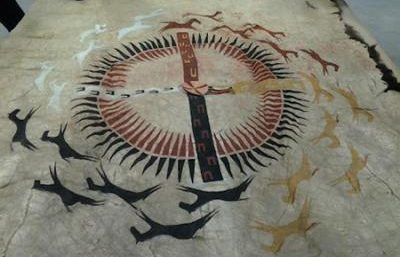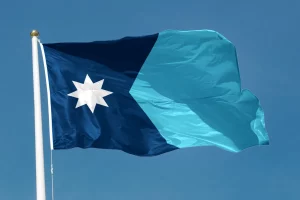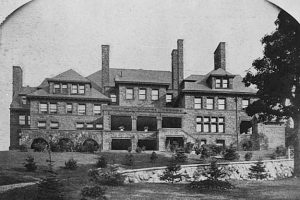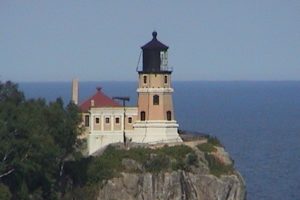(St Paul, MN) — Dec. 1, 2022 – The Minnesota Historical Society (MNHS) is pleased to announce that two artists have been selected for the 2022 Native American Artist-in-Residence program (NAAIR). The program, which is designed to help revitalize traditional forms of American Indian art, is approaching its ninth year in grantmaking.
Selected artists serve a six- to twelve-month paid residency to study the collections at MNHS and other institutions in order to gain a better understanding of their cultural art forms. Residents then share this knowledge by developing community-based programming in their home communities, as well as with the public at large. The 2022 Artists-in-Residence were selected based on the recommendations of a panel of experts in the field of Native arts, culture, and education.
The 2022 Awardees are:

(Buffalo hide painting by Fern Cloud)
Fern Cloud, a member of the Upper Sioux Dakota Community/Sisseton-Wahpeton Dakota Oyate of the Lake Traverse Reservation, is a textile and quill artist as well as a hide painter. She also specializes in traditional doll making. With an understanding that the majority of hide paintings are in museums and in collections, she hopes to study the traditional forms and methods, and to revitalize the art of hide painting. Cloud plans on collaborating with several Native-led organizations and schools to share what she has learned about hide painting during her residency. Cloud stated, “I believe creating a whole picture of the buffalo and how many ways they provided for us is taking the finished robe to another dimension of connectedness.”

(Woven basket hanging in woven nettle fiber by Fern Renville)
Fern Renville, a member of the Sisseton Wahpeton Oyate, is an artist who is bringing her experience with fiber art, pottery, and weaving to study the art of her Dakota homelands. She will use her residency to study and learn the specific process of Dakota weaving from examples such as woven bags made with nettle fiber and buffalo hair. “I’m particularly interested in finding the natural affinity and overlap between storytelling and weaving…” said Renville. Harvesting the nettle plant, the preparation and its final art form requires knowledge of Indigenous plants as well as cultural teachings. Renville plans to share what she learns from her residency with the community at numerous public events through storytelling and by explaining her knowledge of net weaving.
NAAIR is made possible in part by a grant from Margaret A. Cargill Philanthropies.
About the Minnesota Historical Society
The Minnesota Historical Society is a non-profit educational and cultural institution established in 1849. MNHS collects, preserves and tells the story of Minnesota’s past through museum exhibits, libraries and collections, historic sites, educational programs and book publishing. Using the power of history to transform lives, MNHS preserves our past, shares our state’s stories and connects people with history. Visit us at mnhs.org.






